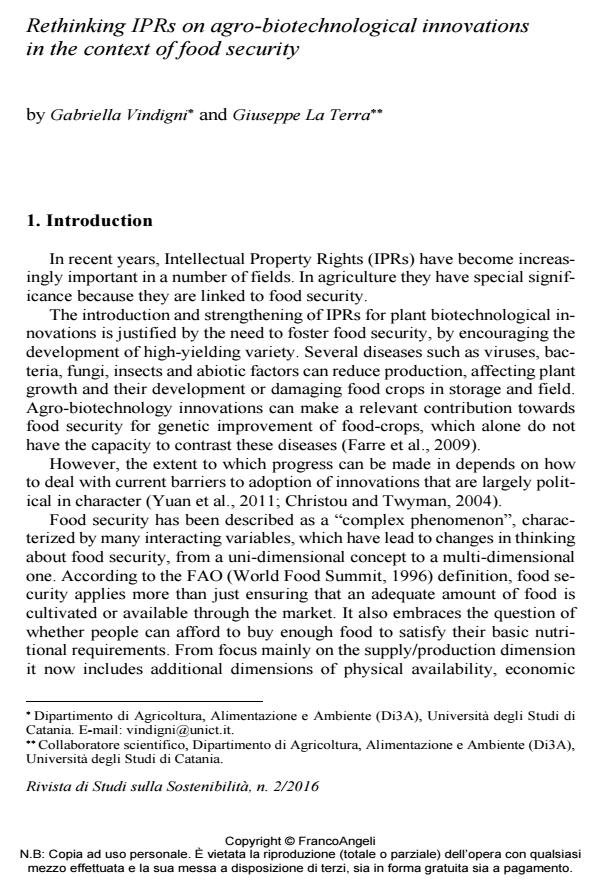Rethinking IPRs on agro-biotechnological innovations in the context of food security
Journal title RIVISTA DI STUDI SULLA SOSTENIBILITA'
Author/s Gabriella Vindigni, Giuseppe La Terra
Publishing Year 2017 Issue 2016/2
Language English Pages 0 P. File size 142 KB
DOI 10.3280/RISS2016-002007
DOI is like a bar code for intellectual property: to have more infomation
click here
Below, you can see the article first page
If you want to buy this article in PDF format, you can do it, following the instructions to buy download credits

FrancoAngeli is member of Publishers International Linking Association, Inc (PILA), a not-for-profit association which run the CrossRef service enabling links to and from online scholarly content.
This paper engages in the debate on how agro-biotechnological innovations can influence food security. IPRs are considerate an important incentive for research initiatives based on genetic resources and they encourage investments in agricultural innovations. However, concerns have risen about the current system of IPR in plant improvement over its impact on food security. IPRs may affect the accessibility and availability of a large number of agricultural products, undermining food security.
Keywords: Food security, agro-biotechnology, access to food, Intellectual Property Rights, Plant Breeder Rights, farmers’ exemption.
Gabriella Vindigni, Giuseppe La Terra, Rethinking IPRs on agro-biotechnological innovations in the context of food security in "RIVISTA DI STUDI SULLA SOSTENIBILITA'" 2/2016, pp , DOI: 10.3280/RISS2016-002007